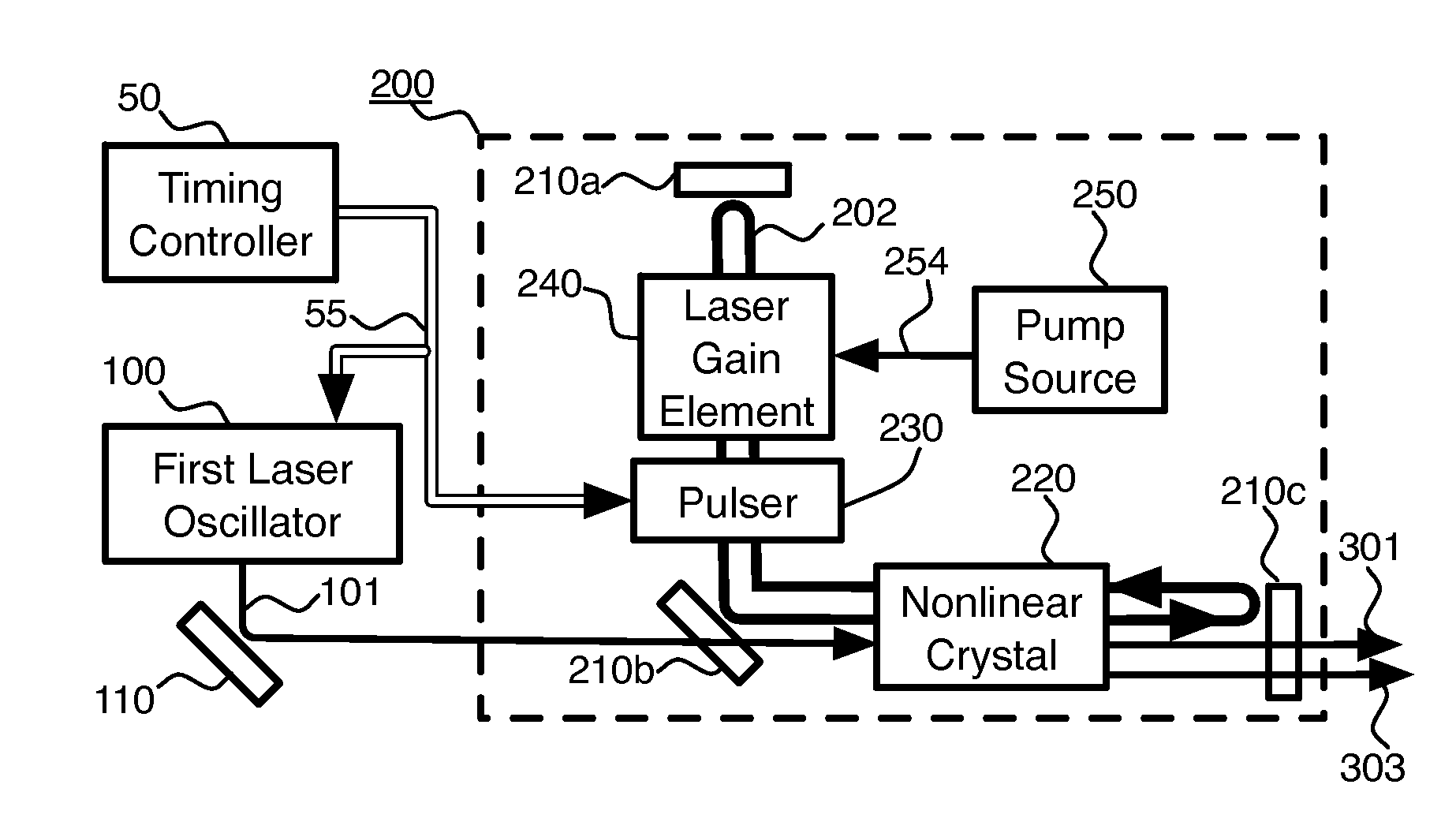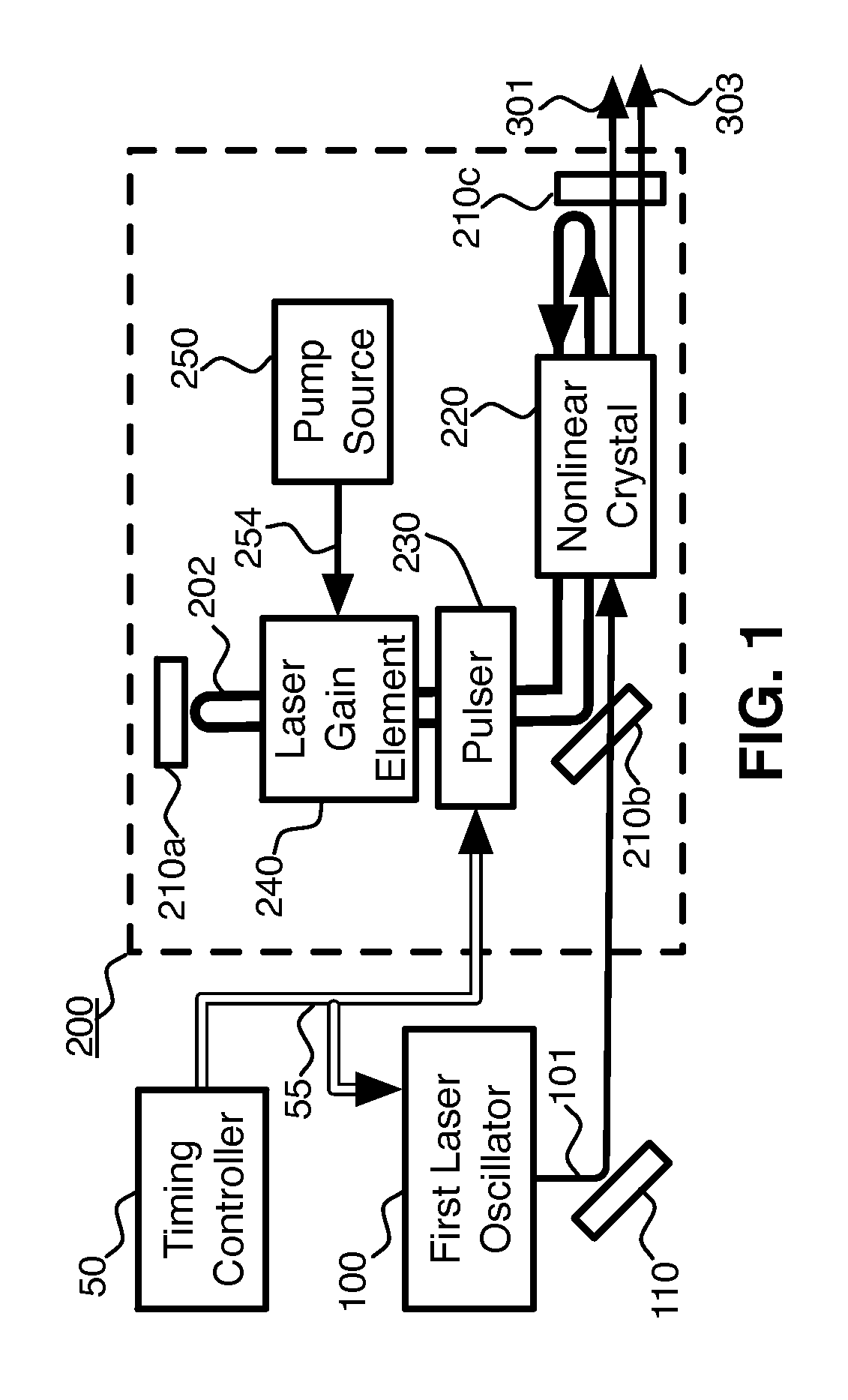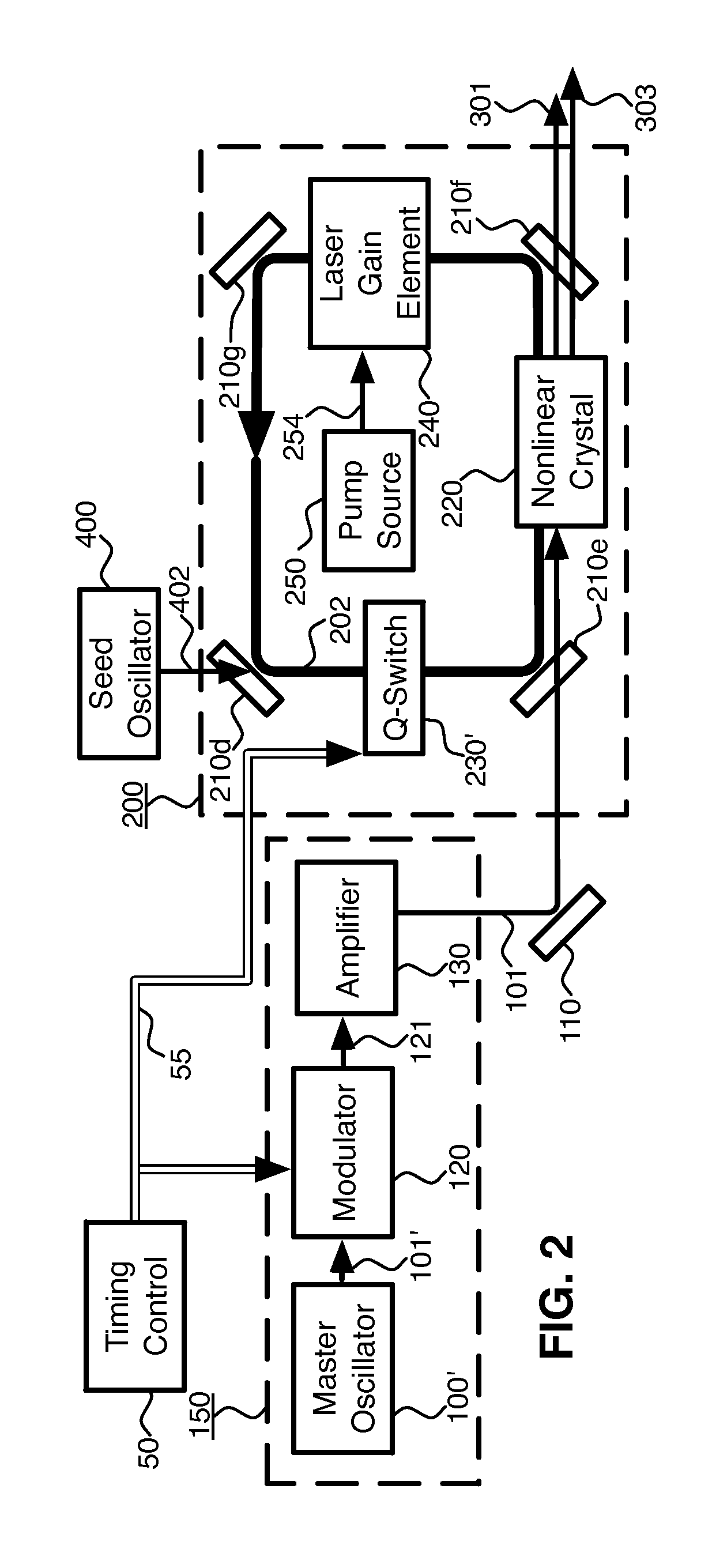Internal optical mixer pulsed at larmor frequency
a larmor frequency, optical mixer technology, applied in the direction of wave amplifying devices, laser details, electrical equipment, etc., can solve the problems of limited wavelength range, low beam efficiency, and design efficiency of low and moderate power beams, and achieve high beam quality, efficient amplify pulsed light, and high power
- Summary
- Abstract
- Description
- Claims
- Application Information
AI Technical Summary
Benefits of technology
Problems solved by technology
Method used
Image
Examples
Embodiment Construction
[0059]One embodiment of the generator of coherent light is shown schematically in FIG. 1.
[0060]A laser oscillator 100 produces a beam of coherent light 101 at a wavelength λ1. A pulsed laser 200 comprises resonator mirrors 210a-c, nonlinear crystal 220, pulser 230, and laser gain element 240. Laser gain element 240 is energized, or “pumped,” by energy 254 from pump source 250. The beam of coherent light 101 is directed by turning mirror 110 through resonator mirror 210b, which is transmissive for wavelength λ1, into the nonlinear crystal 220. Turning mirror 110 is one possible means for directing a beam as desired, but many others, including lenses, optical fibers, and prisms, are possible. The nonlinear crystal 220 is inside the resonator of the pulsed laser 200. This resonator is defined by resonator mirrors 210a-c which are arranged so that there is a path for light such that resonant, internally circulating beam 202 will reflect off of each mirror 210a-c and retrace the same pat...
PUM
 Login to View More
Login to View More Abstract
Description
Claims
Application Information
 Login to View More
Login to View More - R&D
- Intellectual Property
- Life Sciences
- Materials
- Tech Scout
- Unparalleled Data Quality
- Higher Quality Content
- 60% Fewer Hallucinations
Browse by: Latest US Patents, China's latest patents, Technical Efficacy Thesaurus, Application Domain, Technology Topic, Popular Technical Reports.
© 2025 PatSnap. All rights reserved.Legal|Privacy policy|Modern Slavery Act Transparency Statement|Sitemap|About US| Contact US: help@patsnap.com



